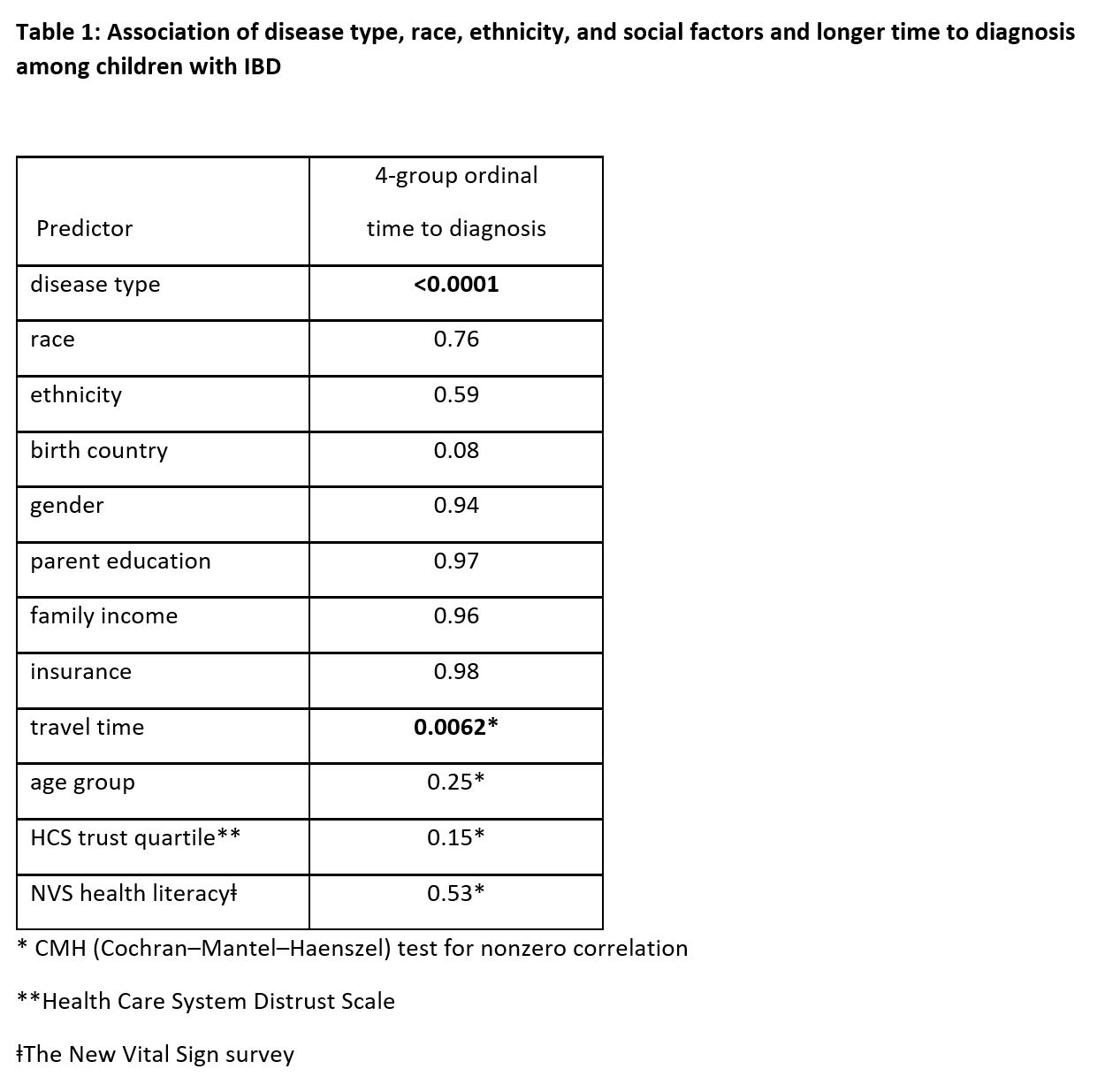Health Equity/Social Determinants of Health
Health Equity/Social Determinants of Health 4
438 - Travel Time to Treating Center, but Not Race or Ethnicity, is Associated with Diagnostic Delay in Pediatric Inflammatory Bowel Disease
Publication Number: 438.219

Joi F. McLaughlin, MD, MS
Resident Physician
University of North Carolina at Chapel Hill School of Medicine
Chapel Hill, North Carolina, United States
Presenting Author(s)
Background:
Delayed diagnosis of inflammatory bowel disease (IBD) is associated with prolonged symptom burden and worse long-term outcomes. Racial and ethnic disparities and social barriers are commonplace in healthcare; however, the extent that these factors are associated with diagnostic delay are largely unknown.
Objective:
To evaluate whether race, ethnicity, disease type, and social factors are associated with delayed diagnosis of pediatric IBD.
Design/Methods: We recruited pediatric patients diagnosed with IBD in the preceding 6 months at 23 U.S. sites from 2019-2022. Parents/guardians reported race, ethnicity, birth country, gender, household income, insurance type, travel time to treatment center as well as the length of time between symptom onset and IBD diagnosis. Parents/guardians also completed a health literacy measure (the Newest Vital Sign) and the Health Care System Distrust scale. We conducted bivariate and multivariable analyses using generalized estimating equations to evaluate associations between these factors and time to diagnosis defined as ≤ 60 days, 61 to 180 days, 181-365 days and >365 days.
Results:
We enrolled 843 patients (mean age at diagnosis 13.2 years, 51% male, 54% Crohn’s disease (CD), 33% ulcerative colitis (UC), 8% Hispanic, 71% non-White). Overall, the mean time to diagnosis was 263 days (median 180). Bivariate associations between measured variables and time to diagnosis are provided in Table 1. After adjustment, associations with longer time to diagnosis included CD vs UC (OR 2.5, 95% CI 1.9-3.3) and longer travel time to clinic [( > 1 hour (OR 1.7, 95% CI 1.2-2.3), > 2 hours (OR 1.6, 95% CI 1.1-2.4) each vs < 30 minute]. Race, ethnicity, birth country, gender, parent education, household income, insurance type, health literacy, and health system distrust were not associated with time to diagnosis.
Conclusion(s):
Consistent with prior literature, children with CD experienced longer time to diagnosis than those with UC. Distance to IBD center appears to be a barrier to timely diagnosis, suggesting an urgent need to evaluate innovative models to provide timely and efficient care for communities disproportionately affected by longer travel times. Reassuringly, our findings demonstrate equitable access to IBD diagnostic care across racial and ethnic groups. 
